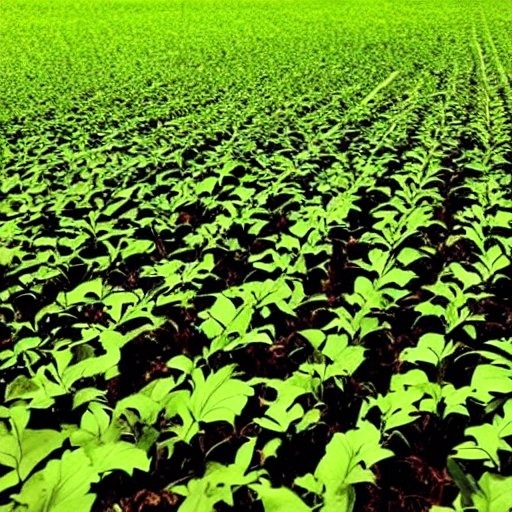Unveiling the Magic of Photosynthesis: Carbon Dioxide's Crucial Role in Crop Growth
By Kelvin Melton - August 16, 2023
In the world of plants, a remarkable dance of energy conversion takes place - a phenomenon known as photosynthesis. This intricate process serves as the driving force behind the growth and vitality of crops, providing us with the food we depend on. At the heart of this natural magic lies a humble yet essential molecule: carbon dioxide (CO2). In this blog post, we'll delve into the captivating journey of photosynthesis and unveil the pivotal role that carbon dioxide plays in crop growth.
The Symphony of Sunlight and Green Pigments
Photosynthesis is the ultimate alchemy that transforms light energy into the very building blocks of life. It's a symphony conducted by the sun's rays and performed by the plants themselves. The stage for this grand performance is set within the plant's leaves, where a green pigment called chlorophyll takes the spotlight. As sunlight kisses the chlorophyll molecules, an enchanting chain reaction begins, igniting the process of photosynthesis.
Carbon Dioxide: The Elemental Partner
Enter carbon dioxide, the unsung hero of this botanical ballet. Carbon dioxide, a colorless and odorless gas abundant in our atmosphere, steps onto the scene as a vital co-star in photosynthesis. It's absorbed by tiny pores called stomata on the plant's leaves, beginning a transformative journey that underpins crop growth.
The Crucial Steps
-
Absorption and Conversion: Carbon dioxide is absorbed through stomata and diffuses into specialized cell structures called chloroplasts. Here, it encounters the mighty chlorophyll, which captures the sun's energy and converts it into chemical energy.
-
Synthesis of Carbohydrates: With energy in hand, the plant gets to work synthesizing carbohydrates (sugars) from carbon dioxide and water. These carbohydrates serve as the plant's energy currency, fueling its growth, development, and various physiological processes.
-
Oxygen Release: As a byproduct of photosynthesis, oxygen is released into the atmosphere. This is the very oxygen we breathe, sustaining life not only for plants but for all animals as well.
The Crop Connection: Carbon Dioxide's Impact on Growth
Now, let's connect the dots between photosynthesis, carbon dioxide, and crop growth. The relationship is nothing short of intricate and fascinating:
-
Fueling Growth: Carbohydrates, the precious products of photosynthesis, are the fuel that drives crop growth. These sugars are channeled to different parts of the plant, promoting root development, flowering, fruiting, and overall biomass accumulation.
-
Yield Maximization: Higher levels of carbon dioxide in the environment turbocharge photosynthesis, leading to increased carbohydrate production. This, in turn, translates to higher crop yields. Indoor farmers have harnessed this connection to their advantage, maintaining optimal CO2 levels to produce bumper harvests.
-
Resource Efficiency: The efficient use of resources, such as water and nutrients, is crucial for sustainable agriculture. Optimal CO2 levels improve water-use efficiency by reducing water loss through transpiration, making crops more resilient in water-scarce conditions.
-
Stress Resilience: Adequate carbon dioxide levels bolster a plant's ability to withstand stressors like heat, pests, and diseases. This resilience is a key factor in ensuring consistent crop growth and quality, especially in controlled indoor environments.
A Greener Future
As we unravel the captivating dance of photosynthesis and its intricate connection to carbon dioxide and crop growth, we gain a deeper appreciation for the harmony of nature. This symbiotic relationship between plants and CO2 highlights the potential of sustainable agriculture to meet the demands of a growing world population.
By understanding and harnessing this connection, we open doors to innovation in indoor farming, greenhouse cultivation, and beyond. The optimization of CO2 levels becomes a strategy not only for yield enhancement but for fostering a greener, more resilient future where crop growth and environmental stewardship go hand in hand. As we celebrate the marvels of photosynthesis, let's embrace the power of carbon dioxide as a driving force behind the nourishment of our planet.
